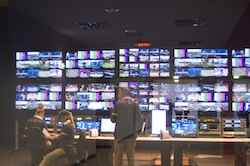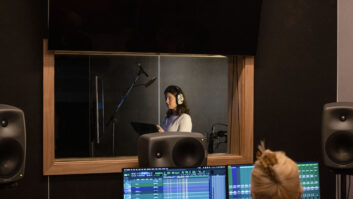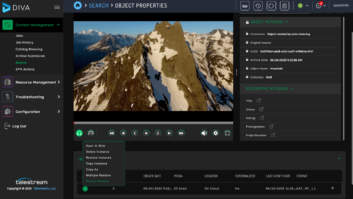
An audience of maybe as many as five billion people. Rights-holding broadcasters in more than 200 countries. The equivalent of 26 simultaneous world championships, across 43 venues and requiring 52 outside broadcast units. The sheer volume of content demanded and created by the London Olympics was staggering. Keeping track of the content – all ingested into a network of EVS servers – was the big challenge. Metadata was absolutely critical, but with the pace of events and the amount of detail required, keeping on top of the logging was vital. The core information about each event – like start lists, and qualifying and record times – was created and managed by the organisers and distributed to all who needed it as the Olympic Data Feed. This was seen as the master database. In the International Broadcast Centre this was used to pre-load the logging stations, so that when an operator sat down to cover an event the touchscreen already had the core information ready. Olympic Broadcast Services provided 50 logging stations to tag all the action. This, along with information automatically pulled out of the ODF like finishing times, was added to the metadata, live whenever possible. This, in turn, was fed to Deltatre, whose system created the Broadcast Data Feed, which was used for populating graphics templates and displaying times and finishing order virtually as the event finished. The complete metadata, linked to time of day timecode, was immediately searchable by any rights-holding broadcaster, with browse video delivered by Microsoft Smooth Streaming. Individuals could then request clips – of up to 10 minutes each – to be delivered in full resolution to their own production facilities. Because the Broadcast Data Feed was tied to timecode it could be used to create any graphics automatically in edits. The September issue of TVBEurope will contain a longer look at production workflows at the Olympics, along with other features on the scale and scope of the broadcast coverage.







